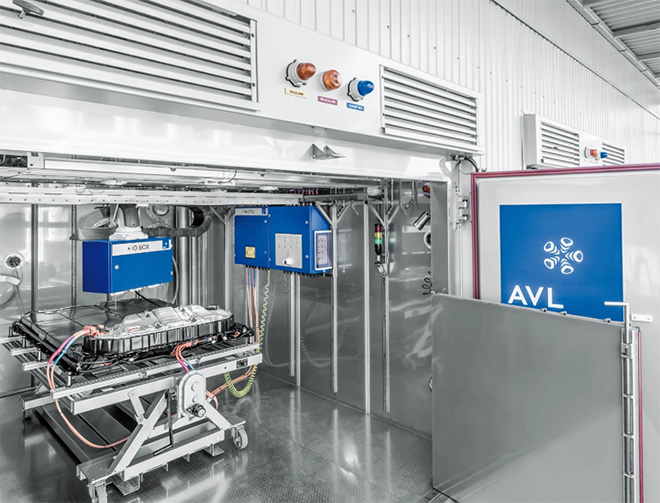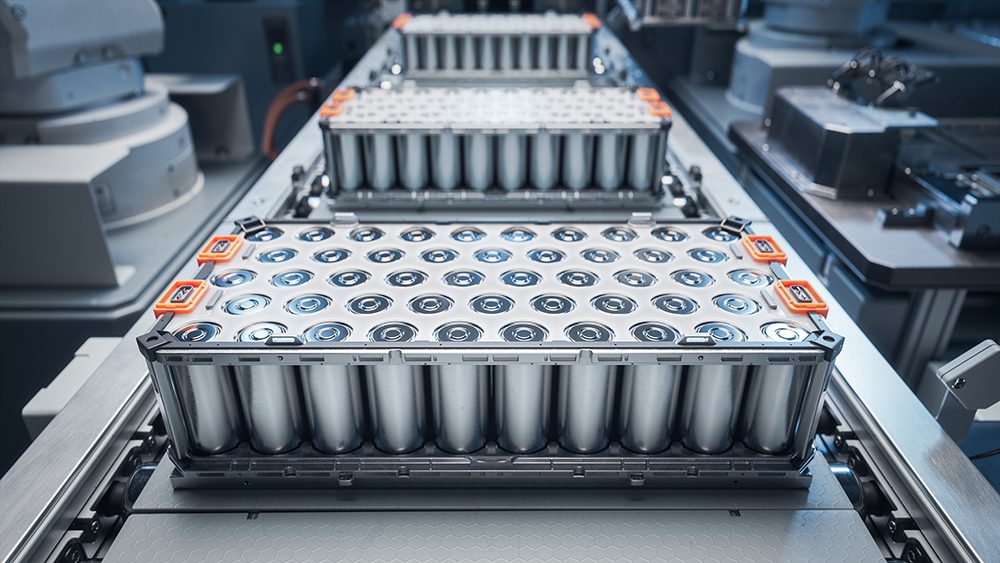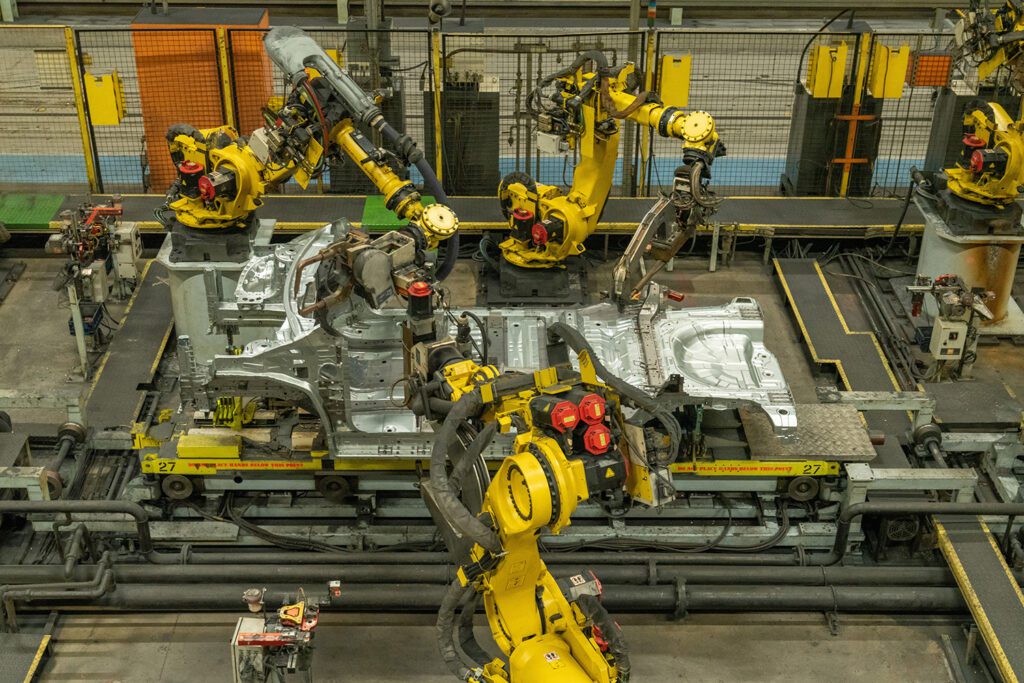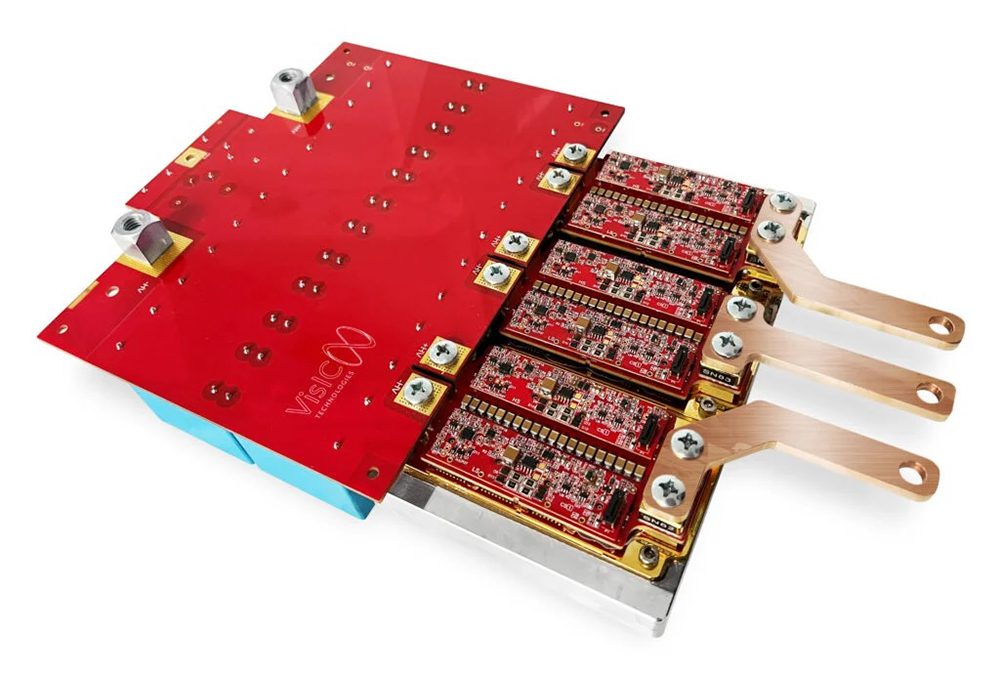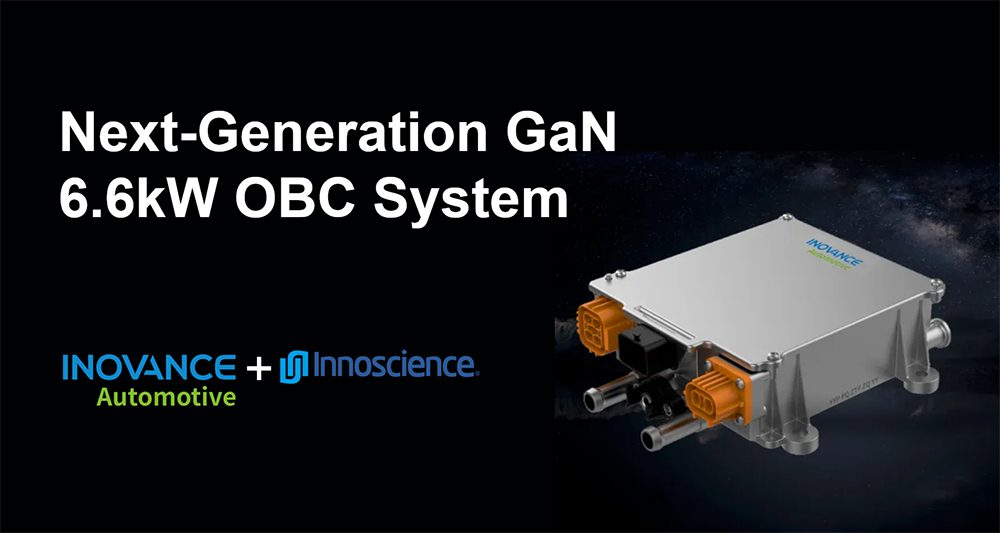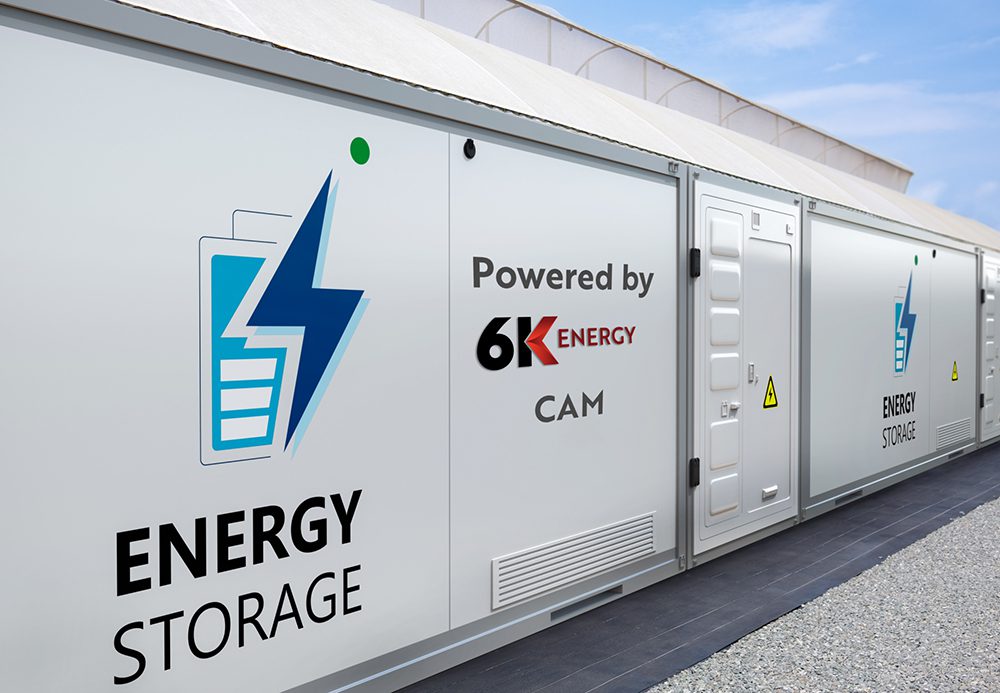High voltage batteries, a key component of electrified powertrains, play a critical role in future mobility concepts. Coupled with one or more electric drives, the integrated propulsion system determines driveability, package flexibility, and other brand-defining DNA. Similarly, the costs and robustness of a battery also contribute to the success of e-mobility. To address the increasing importance of batteries, a deeper look at battery development test procedures is needed.
Many battery test methods that are used today evolved from one for less complicated electrical components; these are not always applicable to modern batteries, the interdependence of the battery on the vehicle design, nor the increasing time pressures on the development cycle. As a result, battery testing has become a time-consuming and cost-intensive process. This raises the question: Where is the potential for optimization?
To answer this question, an investigation into existing test procedures regarding development time and testbed utilization efficiency is needed. AVL’s team of engineers combined its engineering services and independent development of test labs to provide a broad view of the challenges faced.
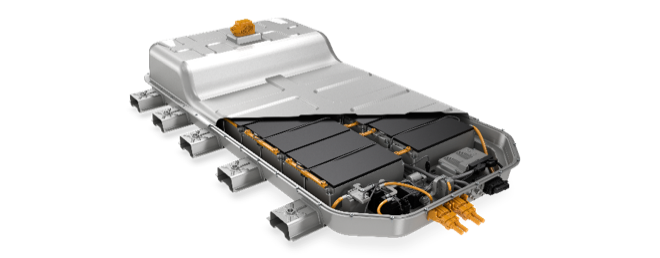
WHAT DOES BATTERY TESTING FOCUS ON?
The development of a battery for propulsion systems has many conflicting targets: (1) performance degradation, (2) energy density, (3) power, safety, integration, service and service procedures, (4) the overall driving and ownership experience, (5) cost, and of course, (6) physical packaging.
A vehicle battery must pass many tests before reaching production maturity. These tests range from abuse and misuse safety testing to cell performance, life, thermal, BMS development (including self-diagnosis), and environmental exposure. This wide range of testing is further complicated by:
- Evolving application of battery systems in products of established or new brands.
- Rapid change in the fundamental understanding of the technology itself.
- Compression of DV and PV testing.
To increase the efficiency of the battery testing process, the industry must focus on three key factors:
- Test duration
- Test quality
- Testbed utilization
TEST DURATION
The testing of a battery system has many aspects that are traditionally time-consuming. Batteries, even cells alone, have high thermal masses, but many testing procedures target carefully controlled temperatures. Aging tests are focused on aspects, which by their nature, take time for trends to develop.
To quickly achieve reliable results with minimal effort, it’s necessary to both (1) provide feedback on the development process early in the design cycle, and (2) accommodate changes that are driven into the battery system from outside components. The ability to combine physical testing with virtual simulation, in parallel, reduces the wait time for the right test conditions and the need for a physical test object to be present.
For example, AVL’s tools and methodologies give test engineers the ability to emulate the thermal system of the entire vehicle. The emulation allows the battery to be tested at extremes in the controlled environment of a laboratory. This reduces the amount of time it takes to determine the right combination of driving, charging, and environmental conditions during on-road testing. After the test, the testbed can be reset to the desired starting temperature within minutes and the next test can begin. By using the automation system, all of this can be achieved around the clock without supervision.
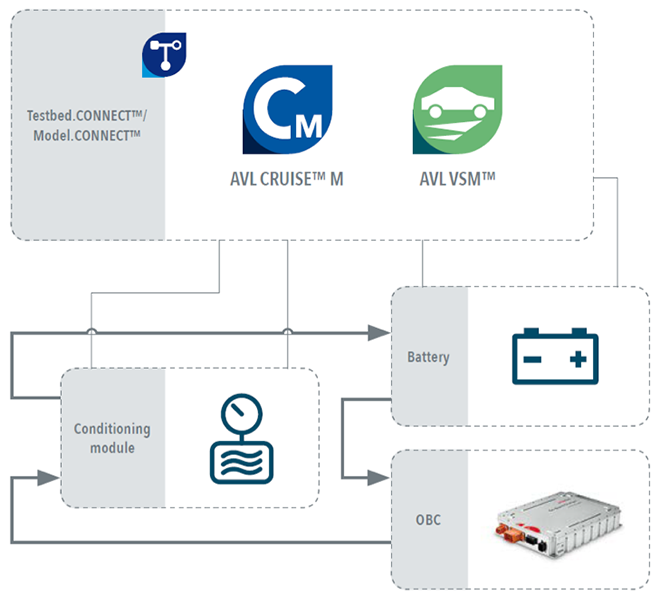
TEST QUALITY
The quality of the test results is more than an accuracy spec. It depends on how well the test procedure has been adapted to the component usage and the ability of the test equipment to emulate the interfaces of a given component.
AVL works with customers to understand the planned test procedures to develop a testbed capable of meeting current and future demands. If necessary, AVL may create new test specifications to match component use cases. As a result, AVL can harness a broad foundation of data and experience that can flow into the development of new test methods and test specifications.
Managing test data is another important aspect of test quality. The data generated during battery tests can be easily communicated and change-managed to run battery representative models to test the propulsion system—whether it be the dynamometers for drive testing, or the emulator for detailed inverter development. These controls reduce human error—and overcome the challenges of exchanging Excel sheets through email and engineers wondering if they still have the most recent version. A focused concept of a battery lab, including the ability of components to seamlessly work together, greatly improves the generation of valid data. With a strong understanding of customer test processes, AVL provides complete turnkey test solutions for in-house battery testing—from conceptualizing customer-specific battery laboratories to supporting customers to save in-house resources during installation and equipment maintenance. For example, the AVL line of bi-directional power supplies, known as E-STORAGE, provides testing solutions from the cell to the full pack level. AVL’s line of test chambers and safety systems are specifically designed for battery testing and are rated for up to EUCAR 6 hazard level and work seamlessly with the battery testbeds. Finally, it is all tied together with the automation system AVL LYNX 2™, which allows for easy scripting and safe, monitored automation while providing integration with databases, calibration management systems, and customer specific models as needed.
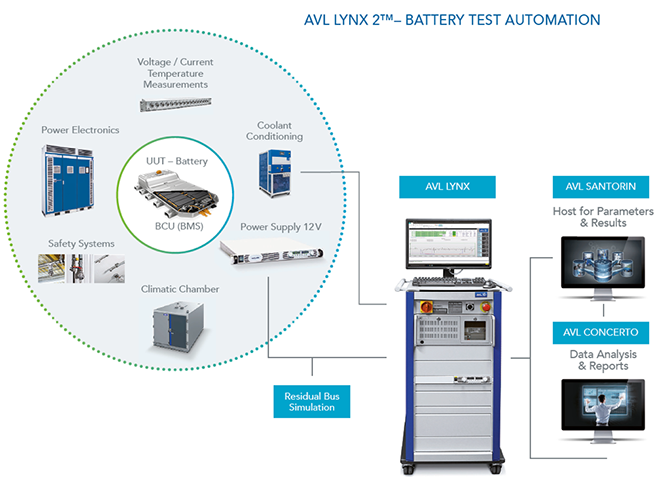
TESTBED UTILIZATION
Development vehicles, test cells, and talented engineers are all in very high demand. Making the most of these resources is the key to meeting tight development timing while producing reliable products. AVL is committed to bringing electrification testing from the road to the lab, to shorten tests, improve reproducibility, and apply automation and standardization of testing.
Through a combination of real-world testing and real-time modelling, driveability calibrations can be verified in the safety and reproducibility of the lab with reduced test times and increased productivity. AVL has adapted the method used to auto-calibrate conventional powertrains to calibrate driveability aspects specific to electric vehicles. With this process in place at AVL’s global battery labs, its battery testing facilities run electrical and thermal testing of batteries, modules, and cells and associated components in automated test cells around the clock. This allows customers to easily transplant testing from AVL test labs to in-house test facilities, seamlessly accommodating your testing needs.

SUMMARY
The existing state of battery testing offers significant potential for optimization. Applying the knowledge gained from customer experiences, AVL provides the tools to fit the uniqueness of each customer, allowing them to do what they do best: make their product great.




